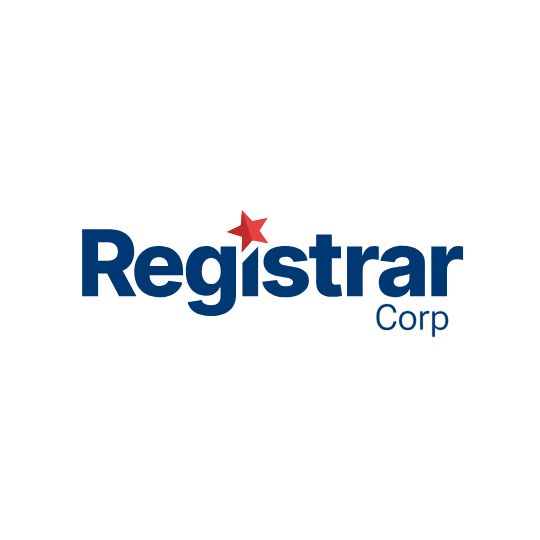In the high-stakes world of pharmaceutical compliance, details matter—especially when it comes to the documentation you submit to regulatory authorities. One of the most critical components in your FDA regulatory toolkit is the five Drug Master File (DMF) types.
DMFs support your regulatory submissions by allowing manufacturers to protect proprietary information while providing the U.S. Food and Drug Administration (FDA) with all the necessary data to evaluate the safety, quality, and consistency of drug components. But not all DMFs are the same. Understanding the five DMF types—and how to use them strategically—can streamline the approval process, strengthen regulatory relationships, and reduce costly back-and-forth.
Let’s break down the structure, purpose, and regulatory relevance of each of the DMF types, while shedding light on the lesser-known pitfalls and strategic considerations that sponsors often overlook.
Type I DMF – Manufacturing Site, Facilities, Operating Procedures, and Personnel (Legacy Use Only)
Historically, the Type I Drug Master File was intended to house detailed information about manufacturing sites, operational procedures, and the personnel responsible for producing drug products. These files included schematics, HVAC systems, cleaning validation, quality assurance systems, and standard operating procedures (SOPs).
A Quick Note on Type I DMFs
While once used to describe manufacturing sites and operational details, the Type I DMF was formally discontinued by the FDA in 2000. Today, this type of information must be included directly in the Chemistry, Manufacturing, and Controls (CMC) section of a New Drug Application (NDA), Abbreviated New Drug Application (ANDA), or Biologics License Application (BLA).
Although some global regulatory agencies may still reference similar documentation structures, Type I DMFs are no longer relevant for new submissions to the U.S. FDA, and therefore have limited strategic value in a contemporary regulatory context.
Type II DMF – Drug Substances, Intermediates, and Drug Products
The Type II DMF is the most frequently submitted and strategically sensitive type. It encompasses:
- The active pharmaceutical ingredient (API)
- Intermediates and reagents used in API synthesis
- Drug product formulations, in some cases
- Detailed descriptions of the synthetic process, equipment, validation protocols, and testing methodologies
A Type II DMF enables API or drug product manufacturers to provide proprietary, confidential information to the FDA—without sharing it directly with their customers (e.g., drug sponsors or contract development organizations).
Sponsors reference these DMFs to demonstrate compliance, allowing the agency to review the information confidentially and in parallel with the drug application.
What Often Gets Missed
- Failure to update the DMF following a site transfer or process change is a major red flag for FDA reviewers.
- Insufficient stability data to support shelf life claims or packaging changes is a frequent cause of delay.
- Lack of harmonization with global submissions (e.g., EMA’s ASMF) can lead to redundant work and conflicting data.
Type III DMF – Packaging Materials
Type III DMFs are used to submit confidential information about packaging components that come into direct contact with the drug product, such as:
- Bottles and containers (glass, plastic, composite)
- Container-closure systems (vials, syringes, blister packs)
- Seals, stoppers, liners, and caps
A Type III DMF enables packaging suppliers to disclose proprietary details about material composition, leachables and extractables profiles, and dosage form compatibility—without revealing them to the drug sponsor.
Why It Matters
Many sponsors underestimate the regulatory complexity of packaging. But packaging failures are a leading cause of recalls, stability issues, and application delays.
Strategic Guidance
- Sponsors should audit all packaging suppliers to ensure their Type III DMFs are current and contain robust data.
- FDA expects complete documentation of container closure integrity (CCI), especially for sterile products.
Type IV DMF – Excipients, Colorants, Flavors, and Other Additives
Type IV DMFs cover non-active components of a drug formulation—materials that influence delivery, stability, or patient acceptability. These include:
- Excipients (e.g., lactose, microcrystalline cellulose, preservatives)
- Colorants and coatings
- Sweeteners and flavoring agents
These substances, although considered “inactive,” have a direct effect on bioavailability, manufacturability, and even patient adherence.
A Type IV DMF allows excipient manufacturers to protect their formulation details while enabling multiple clients to use the material in their submissions.
Regulatory Nuance
- Excipients must comply with pharmacopeial standards, but novel excipients require more rigorous data, including toxicology.
- FDA is increasingly scrutinizing excipients in extended-release and pediatric formulations.
Type V DMF – FDA-Accepted Reference Information
The Type V DMF serves as a flexible option for submitting information that doesn’t fit the other four types but still supports a regulatory review. This may include:
- Biocompatibility or toxicology studies
- Combination product component data
- Specialized analytical techniques
- Model Master Files (per FDA’s 2025 guidance)
Model Master Files allow sponsors to submit simulations or in silico methodologies supporting bioequivalence, formulation development, or control strategies.
Important: You must obtain FDA agreement prior to submitting a Type V DMF.
Key Strategic Considerations for DMF Holders and Sponsors
Each of the DMF types are powerful tools when managed strategically. Consider the following roles and responsibilities:
For DMF Holders
- Maintain regular updates to align with evolving regulatory expectations
- Track cross-references to every application using your DMF
- Ensure eCTD readiness for all submissions
- Monitor FDA communications and guidance changes, especially for complex generics
For Sponsors Referencing a DMF
- Verify access: Ensure a valid Letter of Authorization (LOA) is submitted
- Audit the DMF holder’s compliance: Your application may be delayed if the DMF is incomplete
- Understand the DMF’s scope: Not all Type II DMFs include data on stability, residual solvents, or particle size
Little-Known Challenges That Cause Major Delays
Even with a solid understanding of DMF types and responsibilities, sponsors and DMF holders alike can run into unexpected issues. These lesser-known challenges often surface late in the submission process, causing avoidable setbacks.
- Outdated LOAs: A new LOA may be required for new dosage forms or strengths.
- Non-harmonized global filings: FDA-compliant DMFs may fall short of EMA or WHO expectations.
- Inadequate lifecycle management: Sponsors often rely on outdated or incomplete DMFs without verification.
DMF Types Beyond Compliance
Used effectively, DMFs can support strategic objectives far beyond regulatory approval. They become key enablers of speed, efficiency, and trust across the product lifecycle. When built with foresight, a DMF can reduce review times, facilitate partnerships, and safeguard proprietary information—serving as both a defensive tool and a growth accelerator. Here’s how:
- Rapid regulatory engagement
- Modular submissions for multiple products
- Confidentiality protection for suppliers and CDMOs
- Strategic partnerships with audit-ready documentation
Secure, Strategic, and Submission-Ready: Registrar Corp’s DMF Support
At Registrar Corp, we understand that managing a DMF isn’t just about format—it’s about strategy, security, and sustainability.
We provide:
- Administrative support for eCTD formatting
- Lifecycle maintenance, version control, and LOA tracking
- Cross-referencing optimization
- Global harmonization (ASMF, CEP, PSMF equivalents)
- MyFDA portal access for secure updates and FDA communication
Turn Regulatory Documents into Strategic Assets
DMFs are more than technical files—they’re a cornerstone of regulatory and commercial strategy. Whether you’re an API manufacturer, packaging vendor, or global sponsor, the right structure, support, and security can turn your DMFs into high-impact assets.
Let Registrar Corp bring clarity, continuity, and control to your DMF program—so you can focus on growth, not gaps.
Transform your DMFs from reactive filings into proactive assets with Registrar Corp.









